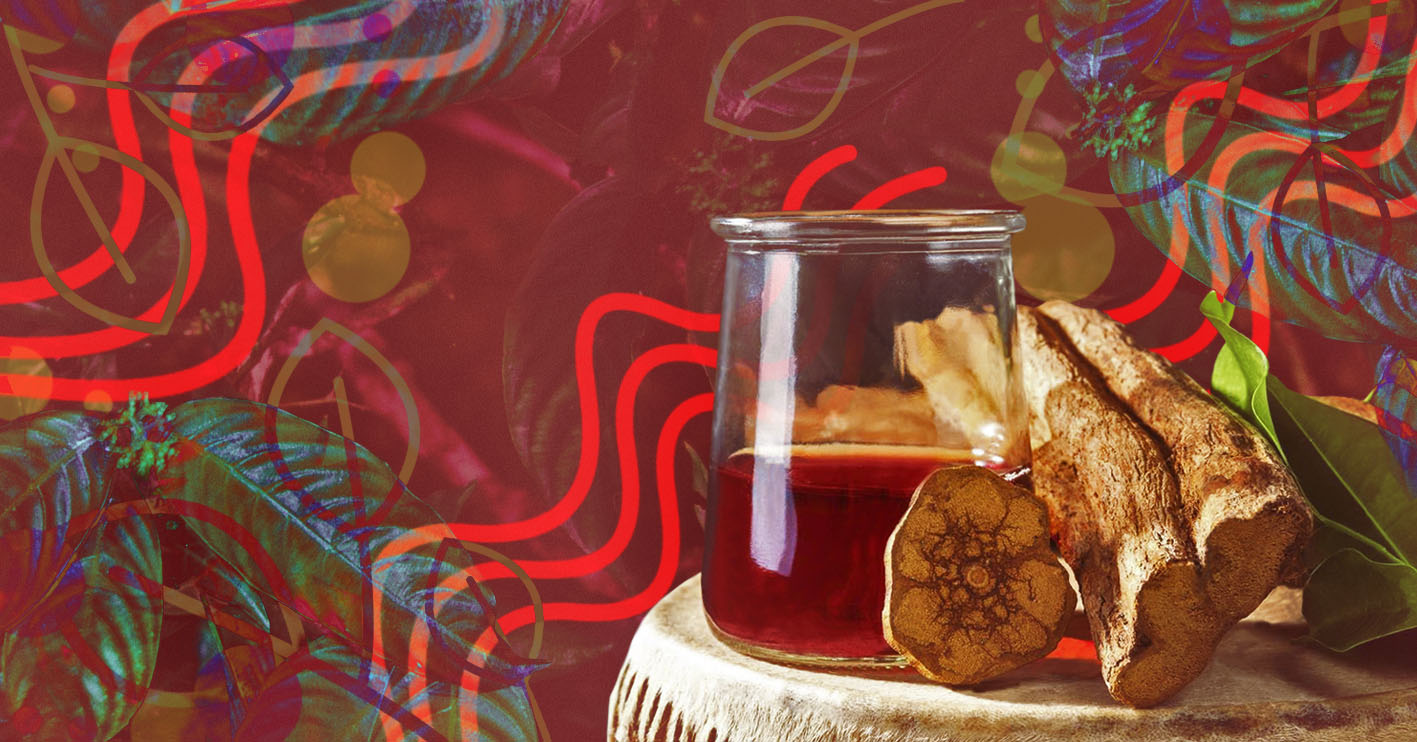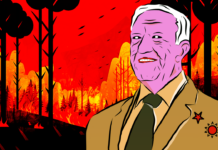- Is Ayahuasca a “Drug”? - August 28, 2019
As ayahuasca drinking emerges as a global phenomenon beyond the Amazon, one of the more curious claims about the brew that one regularly comes across is that it is not a “drug.” People who have experienced ayahuasca will call it a medicine, a sacrament, or even a plant teacher, but with remarkable frequency and predictability insist adamantly that it’s not a “drug.”
Almost anyone with first-hand knowledge of the brew—whether it’s called ayahuasca, yagé, caapi, hoasca, or Daime tea—is well aware of its profound consciousness-altering properties and capacity to generate astounding visions, auditions, emotions, and ideations.
What could they mean by this? It can’t be that they are claiming ayahuasca is not psychoactive. Almost anyone with first-hand knowledge of the brew—whether it’s called ayahuasca, yagé, caapi, hoasca, or Daime tea—is well aware of its profound consciousness-altering properties and capacity to generate astounding visions, auditions, emotions, and ideations. So, if ayahuasca’s psychoactive effects are not characteristics of a “drug,” then what are they? (and why the reluctance to call it a drug?)
These questions may be better answered not by delving into what ayahuasca is per se (i.e., ontologically), but rather by considering how the word “drug” operates in public and political discourses (in the English language at least) and how this linguistic perspective illuminates why ayahuasca drinkers might be rejecting this label. Through a critical discourse lens, we can see that the word “drug” in contemporary modern usage has three distinct meanings. Outlining these can help illustrate why the impulse not to apply the word “drug” to ayahuasca may be a convenient strategy to avoid the stigma typically associated with substances to which we apply the pejorative label of “drug”; or, at least, one common meaning of that term.
In many instances, the word “drug” refers simply to a substance accepted as a medicine—this is what we mean in the phrases “drug store” or “drug company,” in which the attribution of psychoactive properties is indeterminate or irrelevant. When we mean “medicine” with the word “drug,” it is the therapeutic application or health effects of a substance that are salient, rather than whether or not a modified state of consciousness results from its ingestion (and although some medicines dispensed at a pharmacy may be psychoactive—such as Dexedrine, diazepam or oxycodone—most are not).
A second use of the word “drug” simply denotes a psychoactive substance. This is what we mean when we say that alcohol and coffee are drugs, as these are not medicines in contemporary Western biomedical systems, but they do have psychoactive properties. When the word “drug” is used as a noun with this sense, it is most closely related to the meaning of the verb “to drug,” which does not refer to secretly giving someone a medication, nor a substance that is necessarily illegal, but rather to surreptitiously administer a substance that alters consciousness.
A third use of the word “drug” is to denote a bad or illegal substance, often with the implicit circularity that a substance is bad because it’s illegal and illegal because it’s bad. This is what is meant by the word “drug” in the phrases “drug dealer” or “drug war”; and, of course, with this use of “drug,” a property of psychoactivity is assumed, but stereotypically so, too, are the purportedly inherent risks of addiction, criminality, and death. When the term “drug” is used in this way, it refers to a plant or chemical substance that not only alters human consciousness, but also has been subjected to the most rigorous forms of control—i.e., criminalization—under the international drug control regime.
So, although ayahuasca is among the most important remedies in the traditional folk healing systems of Amazonian indigenous peoples who have used it traditionally, it has not met the rigorous hurdles of being sanctified as a medicine according to modern biomedical standards.
So, is ayahuasca a “drug”? In the first sense of it being a “medicine,” the answer is no; at least, not according to the Western biomedical paradigm, which, since the nineteenth century, has been loath to admit any plants as medicines. The process for becoming a medically-approved drug, licensed for use in a hospital or sale in a pharmacy, is one that regulatory agencies and the pharmaceutical industry applies almost exclusively to chemical derivatives, i.e., white powders, not a simple decoction of plants such as ayahuasca. So, although ayahuasca is among the most important remedies in the traditional folk healing systems of Amazonian indigenous peoples who have used it traditionally, it has not met the rigorous hurdles of being sanctified as a medicine according to modern biomedical standards. Only after being subjected to rigorous randomized controlled clinical trials and brought to market within the regulatory regimes designed largely by and for the pharmaceutical industry does a substance or preparation thereof become a “drug” in this sense.
In the second sense of “drug” (i.e., psychoactive substance), the answer is, clearly, yes; ayahuasca is a drug. The standard ayahuasca brew contains harmala alkaloids (from the Banisteriopsis caapi vine) and dimethyltryptamine (from the Psychotria viridis leaves) that, in combination, create a unique biochemical synergy that potentiates its psychoactive effects when drunk. The monoamine oxidase inhibition of the harmala alkaloids renders the DMT orally active and slows down its metabolism in the brain, producing psychedelic or entheogenic effects for several hours after. In this regard, ayahuasca is a “drug” in the same way that other plants, such as opium, khat, coca or cacao, are: they all contain molecules that affect brain chemistry through neurotransmitter systems that alter consciousness.
In the communities or sub-cultures that consume ayahuasca with any regularity, it is typically referred to as a sacrament, a medicine, or a “plant teacher,” but, almost never a “drug.”
It seems that it is the third sense of “drug”—i.e., a substance being deemed bad or illegal—that is at the heart of the contention about how applicable this term is to ayahuasca. According to the logic of the contemporary global War on Drugs, since ayahuasca contains or may be construed as a “preparation” of DMT, it is most certainly a “drug” (or even “drug of abuse,” in the pseudoscientific ontological categorizations of some policy-makers). However, for people who drink ayahuasca, typically in ritual or ceremonial contexts, this implicit castigation of the brew is met with understandable resistance. In the communities or sub-cultures that consume ayahuasca with any regularity, it is typically referred to as a sacrament, a medicine, or a “plant teacher,” but, almost never a “drug.”
To elaborate on this resistance, we should consider the two primary metaphors that underlie the framing of this third sense of “drug” (and drug users) in contemporary public discourse: “drugs as demons” and “drugs as pathogens.” These metaphors have existed in a long-standing duopolistic social and political framing of psychoactive substances, and people who use them—so much so that mainstream society, and even many legal and medical professionals, have largely internalized and accepted them as self-evident.
The “drugs as demons” metaphor casts drugs as malevolent agents, entities that have the capacity to overwhelm free will and negatively impact behaviour, much like demons have been regarded in devout religious communities. This metaphor goes back to at least the eighteenth century, in lurid depictions of distilled spirits or opium, but is still very much present in the discourse of international drug control, with descriptions of the so-called world “drug” problem as an “evil,” “menace,” or “monster.” And, of course, with this metaphor of “drugs as demons,” people who use drugs are regarded as bad or wicked and deserving of punishment, including fines, expulsion from school, loss of employment, or even imprisonment or death.
The “drugs as pathogens” metaphor, by contrast, depicts illegal psychoactive substances as like viruses or bacteria that may infect both individuals or populations with the disease of addiction, which has historically been portrayed as the inevitable outcome of any use. This metaphor underlies the medical or public health approach to addressing drug use, by which people who use drugs are ipso facto regarded as sick and in need of treatment, or in the case of young people considered at risk of drug use, in need of inoculation through anti-drug education campaigns. The “drugs as pathogens” metaphor may seem to stand in contrast to the more benign “drugs as demons” metaphor and its punitive implications, but together they jointly comprise a conceptual frame that underlies most contemporary drug policy today.
Thus, the very act of consuming ayahuasca makes one a “drug” user, with all the stigma associated with this label, which is itself deeply troubling and unconscionable.
The objection by people who drink ayahuasca—and why there is often a resistance to calling ayahuasca a “drug”—is that its consumption isn’t bad and does not necessitate punishment, nor does even its regular use make one sick and in need of treatment. However, due to the fact that ayahuasca’s composition includes DMT as a trace chemical constituent, the reflexive assumption by the contemporary drug policy regime is that it is itself a bad illegal “drug.” Thus, the very act of consuming ayahuasca makes one a “drug” user, with all the stigma associated with this label, which is itself deeply troubling and unconscionable.
In conclusion, whether ayahuasca should be called a drug depends on what you mean by the word “drug.” While ayahuasca is certainly a psychoactive brew, the semantic and pragmatic resonances that the word “drug” carries in contemporary common usage make it a label that many ayahuasca drinkers prefer to disavow. In my estimation—and as others’ direct phenomenological experiences with the brew often attest—ayahuasca may be most accurately and respectfully characterized not as a drug, but in the way traditional Amazonian indigenous peoples have long recognized it: as a plant teacher.
To discuss the continuities and discontinuities between recreational, therapeutic and religious use of “drugs”, join us at Psychedelic Liberty Summit

This article was based on ideas and arguments more fully developed here: Tupper, K. W. (2012). Psychoactive substances and the English language: “Drugs,” discourses and public policy. Contemporary Drug Problems, 39(3), 461–492.
Take a minute to browse our stock:
Did you enjoy reading this article?
Please support Chacruna's work by donating to us. We are an independent organization and we offer free education and advocacy for psychedelic plant medicines. We are a team of dedicated volunteers!
Can you help Chacruna advance cultural understanding around these substances?














